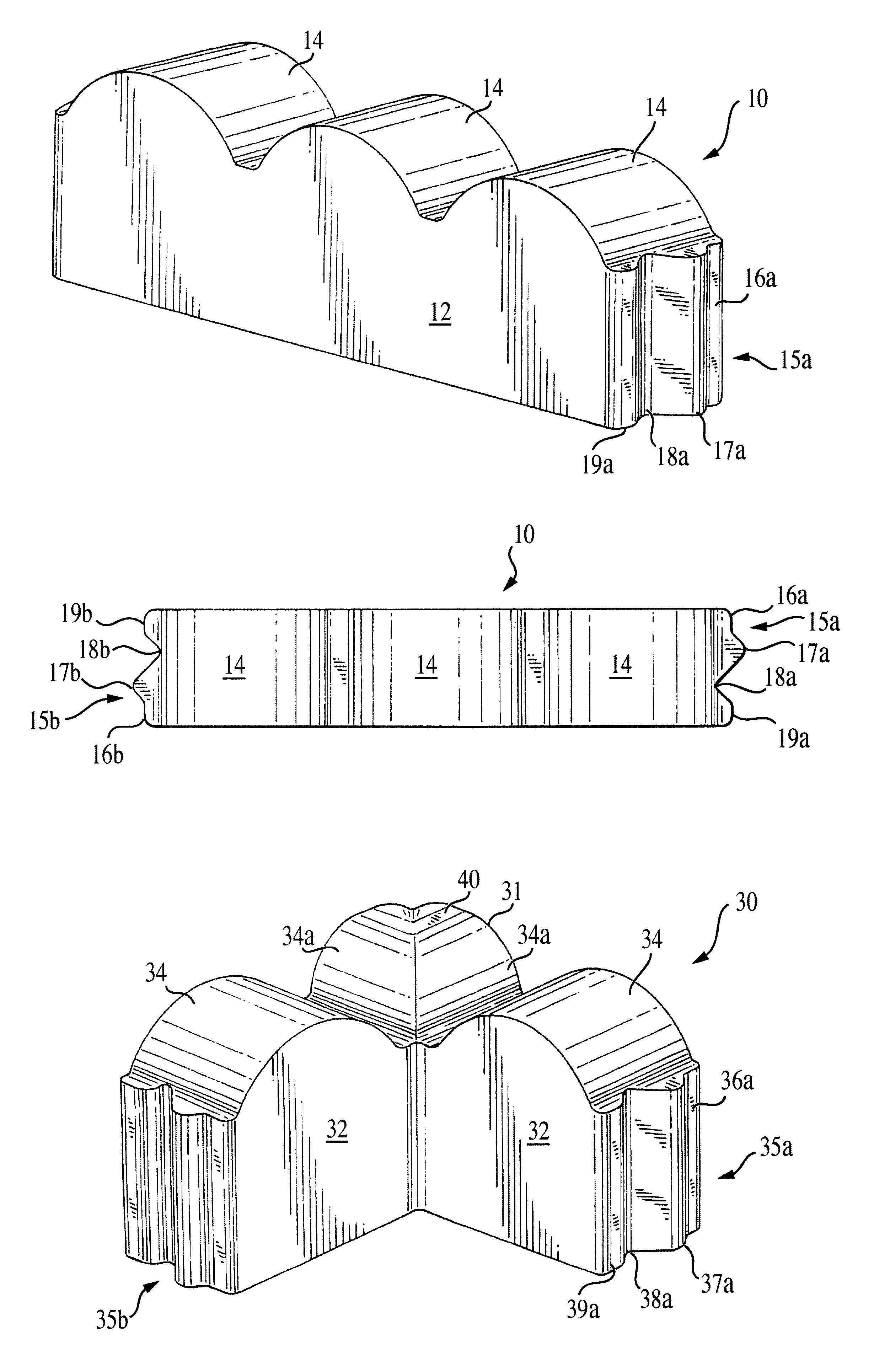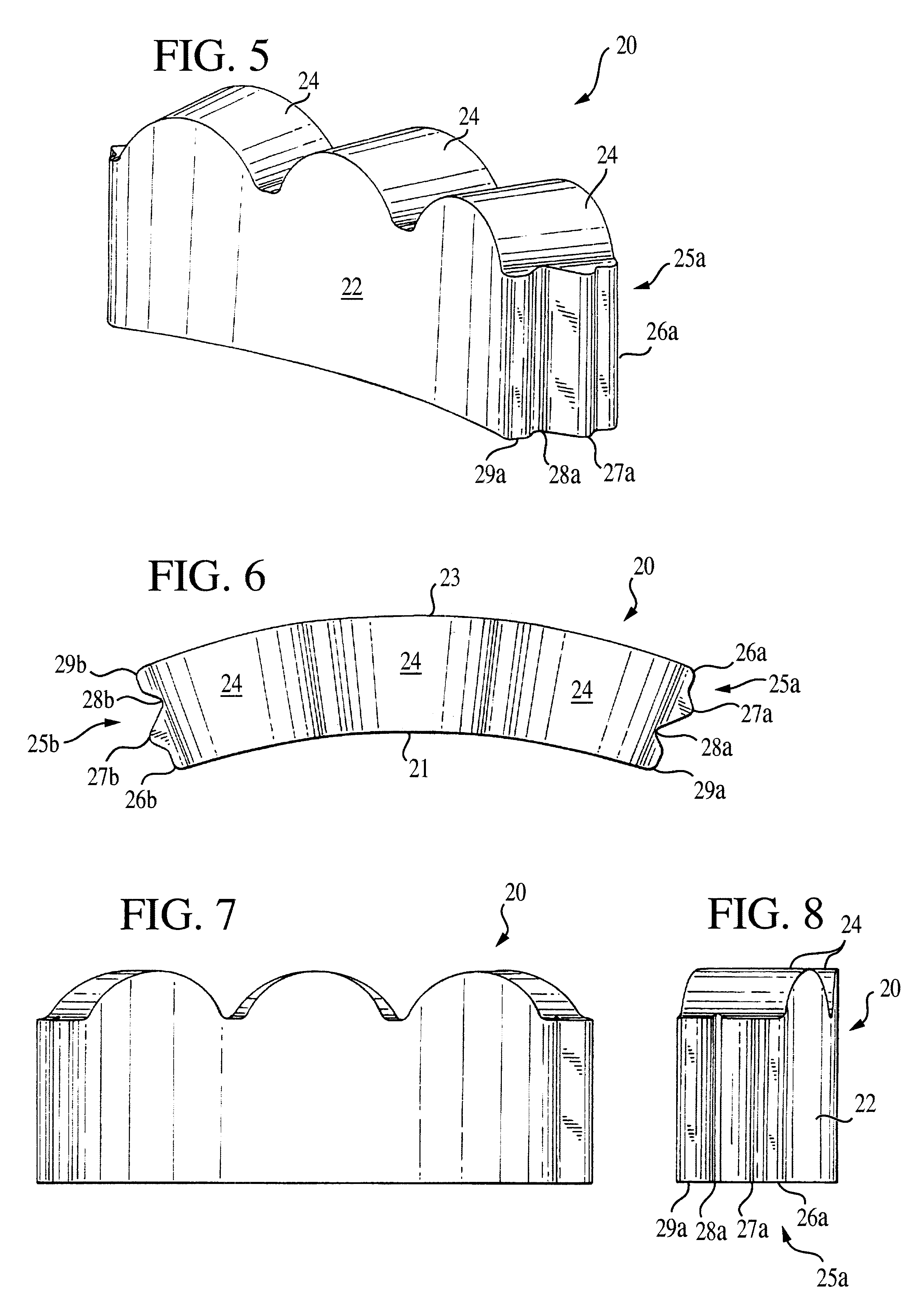Garden edging system
a technology for edging and gardens, applied in the field of garden edging systems, can solve the problems of increased cost, increased maintenance costs, and increased maintenance costs, and achieve the effects of reducing the length ratio, reducing maintenance costs, and being highly resistant to breakag
- Summary
- Abstract
- Description
- Claims
- Application Information
AI Technical Summary
Benefits of technology
Problems solved by technology
Method used
Image
Examples
Embodiment Construction
The following is a detailed description of preferred embodiments of the invention presently deemed by the inventor to be the best mode of carrying out his invention. The dimensions set forth herein for the three pieces or units of the edging system of the invention are the optimum dimensions for the units. Reasonable variations may be made within the skill of the art.
FIGS. 1, 2, 3 and 4 illustrate a preferred embodiment of the straight edging unit of the invention. The unit, indicated generally at 10, is preferably molded from a cementitious mixture, e.g., low or no slump concrete, and is comprised of a rectangular cubic body 12 and a scalloped top comprised of a plurality of scallops, preferably three scallops 14. The unit has a preferred length of 12 inches, a preferred thickness of two and one-quarter inches and a preferred overall height, including the scallops, of four and a quarter inches. Each scallop has a height of about one inch (31 / 32nds of an inch) and comprises an arc o...
PUM
 Login to View More
Login to View More Abstract
Description
Claims
Application Information
 Login to View More
Login to View More - R&D
- Intellectual Property
- Life Sciences
- Materials
- Tech Scout
- Unparalleled Data Quality
- Higher Quality Content
- 60% Fewer Hallucinations
Browse by: Latest US Patents, China's latest patents, Technical Efficacy Thesaurus, Application Domain, Technology Topic, Popular Technical Reports.
© 2025 PatSnap. All rights reserved.Legal|Privacy policy|Modern Slavery Act Transparency Statement|Sitemap|About US| Contact US: help@patsnap.com



